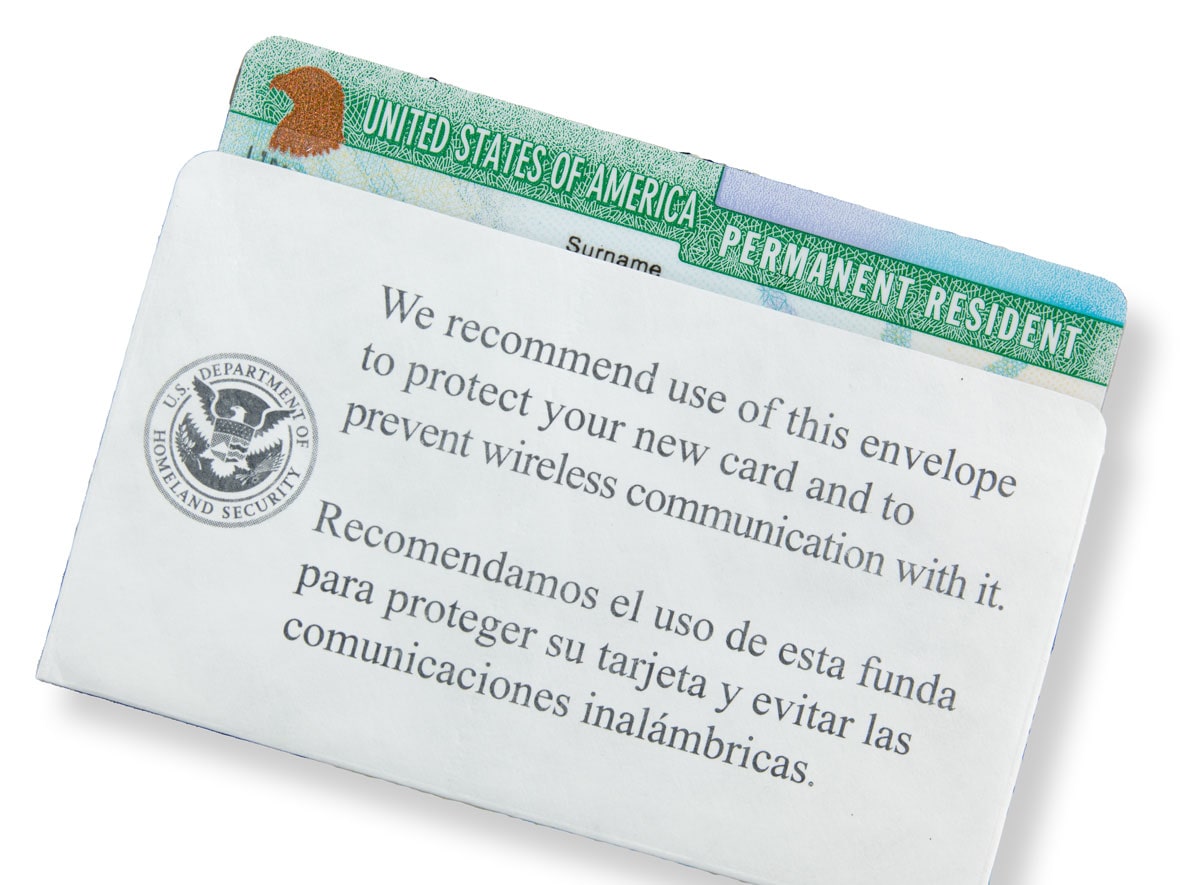
United States Permanent Residence
United States Permanent Residency is a status that authorizes immigrants to live and work permanently in the United States. Foreign immigrants who obtain legal Permanent Residence are given a resident card, also known as a “green card.”
Permanent Residence is not the same as Citizenship
Permanent residents are not allowed to hold a United States passport. What's more, permanent residents remain nationals of their country of origin. Permanent residents are not allowed to vote in United States elections or run in official elections. It is easier for citizens to bring their family members to the United States and they have greater access to federal civil servant jobs.
United States citizens are also eligible for increased federal assistance and improved benefit programs such as Medicare or Social Security.
Permanent residents are subject to physical residency requirements whether they are citizens of the United States or not. For example, permanent residents can lose their residency status if they remain outside the United States for more than one year without obtaining the appropriate reentry permit, if they obtain a reentry permit but do not obtain a return visa after two years, if they move to another country with the intention of living permanently there, or if they fail to file taxes while residing abroad for any period of time.
In order to enjoy full citizenship rights, permanent residents must apply for United States citizenship.
Permanent residents can become full citizens of the United States by applying for citizenship through USCIS.
Generally, permanent residents can present full citizenship after having resided in the United States for a period of five years.

EB-5 Visa applicants become permanent residents once their I-526 application has been approved by USCIS. However, they become conditional permanent residents for two years instead of full permanent residents at this step of the EB-5 Visa process. This allows applicants to come to the United States to monitor their EB-5 investment for two years. At the end of this period, investors apply for full permanent residency by filling out the I-829 application. Once this application is approved, the investor, his or her spouse, and his or her unmarried children under the age of 21 can live and work permanently in the United States for the rest of their lives. They are also granted the option to become United States citizens after 5 years.
Permanent Residence Rights
- Live and work anywhere in the United States.
- Fully covered by local, state, and federal laws of the United States.
- Access to a world-class higher education system.
- Access to a world-class medical system.
- They can travel outside the United States.
- They have the option of obtaining United States citizenship.

Responsibilities of Permanent Residents
-
Pay applicable state taxes.
-
Pay applicable federal taxes.
-
Men between the ages of 18 and 25 must register with the Selective Service.
-
Exemplary moral character.
-
Physical presence requirements.
1. Are you eligible to apply?
United States Immigration laws provide a variety of ways for people to apply for a Green Card. Eligibility requirements will vary depending on the immigrant category in which you are applying.
Be sponsored to obtain a Green Card
Most people applying for a Green Card will need to complete at least two forms – an immigrant petition and the Green Card Application (Form I-485). Usually, someone else must file the petition on your behalf (usually known as the sponsor or the person petitioning you), although you may be eligible to file the petition yourself (self-petition) in some cases. Below you will find some of the most common forms:
- Form I-130, Petition for Alien Relative
- Form I-140, Immigrant Petition for Foreign Worker
- Form I-730, Petition for Relative of Refugee/Asylee
- Form I-589, Application for Asylum or Withholding of Removal
Other requests include:
- Form I-360, Petition for Amerasian, Widow(er), or Special Immigrant
- Form I-526, Immigrant Petition by Foreign Entrepreneur
- Form I-918, Petition for U Nonimmigrant Status
- Form I-929, Petition for Qualified Relative of a U-1 Nonimmigrant
Check your eligibility category to see if you need to have a petition.
2. Are you inside or outside the United States?
If you are eligible to apply for a Green Card, then you will need to determine which process you will use: adjustment of status or consular processing.
The steps you must take to apply for American residency
Here is the general application process that most applicants will go through:
- Usually someone files an immigrant petition on your behalf (usually known as the sponsor or the person petitioning you). In some cases, you may be eligible to file the petition yourself (self-petition).
- After USCIS approves your immigrant petition, and if a visa is available in your category, you will file a Green Card application with USCIS or a visa application with the Department of State.
- Appear at the biometric data collection appointment to provide your fingerprints, photographs, and a signature.
- Appear for the interview.
- You receive the decision on your application.